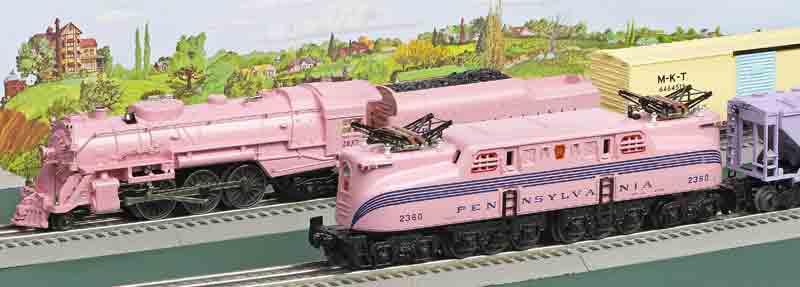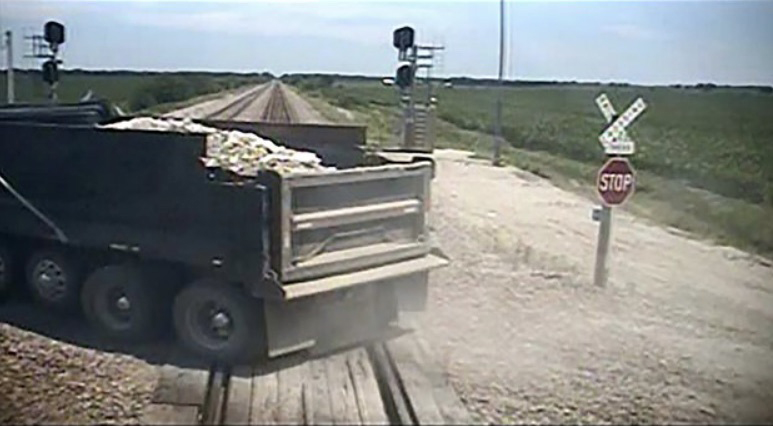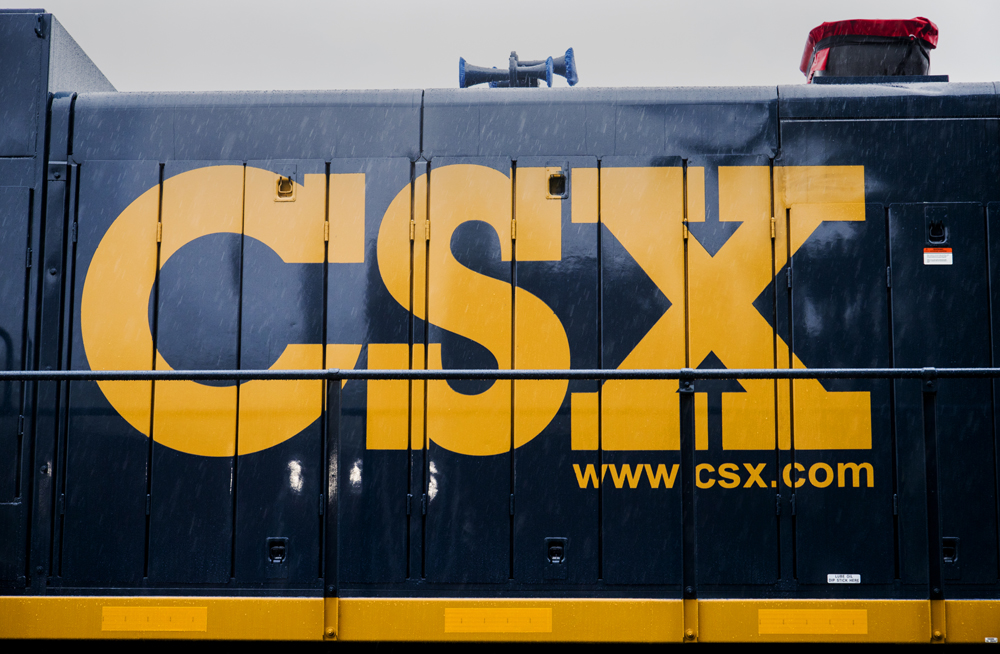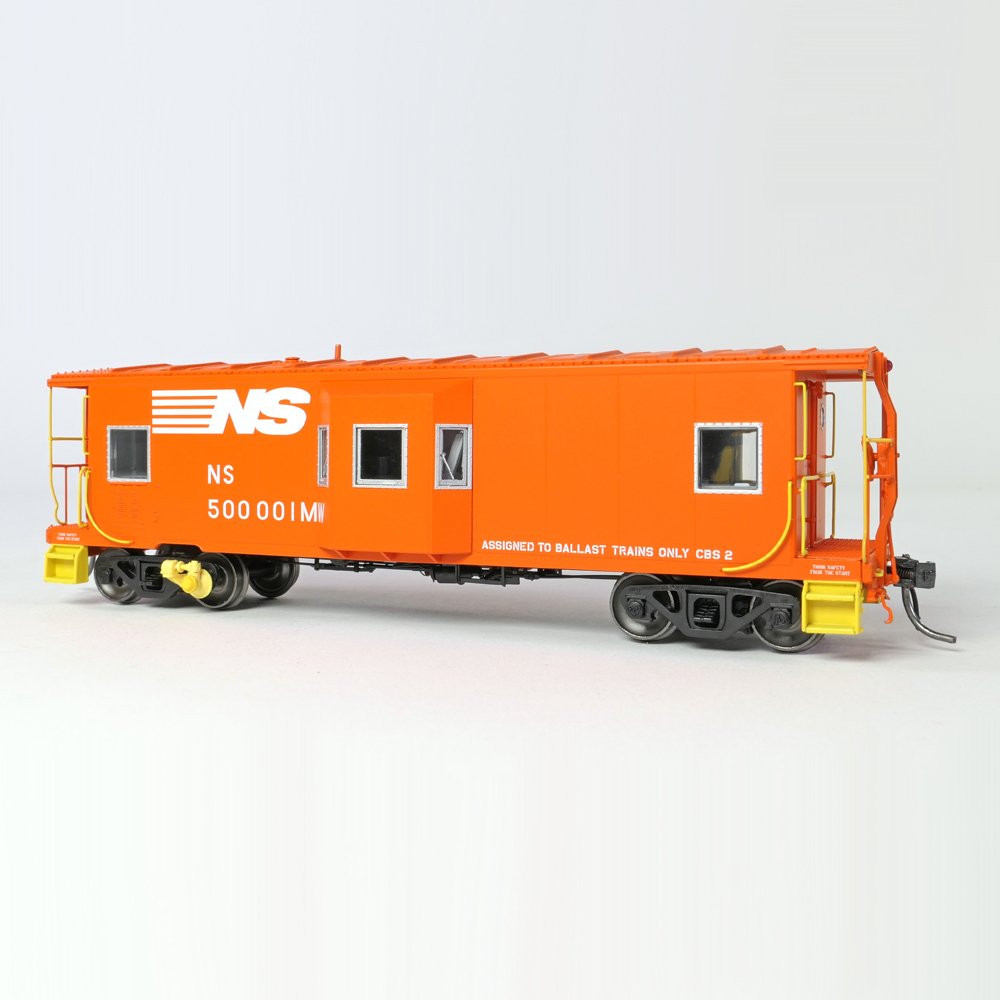Based on this phone call, I can say that Lionel sold at least one 1957 Girl’s Set to its intended audience. While a marketing failure when originally produced, the pastel-colored no. 1587S Lady Lionel sets have been hot items in the collector market for years. By the way, my friend got $2,000 for his set at auction and divided the money between his daughters.
Collector demand for the original sets prompted modern-era reproductions manufactured by Lionel, MTH, and K-Line. But the most intriguing reproduction may be one of the two new Girl’s Sets offered by Williams. One set is powered by a 2-6-4 steamer (as was the Lionel original), while the other set is headed by – drum roll, please – a pink postwar-style GG1 electric!
At this point, you’ve either clutched your chest and called for some smelling salts, or are grinning and are asking, “A pink GG1 – why the heck not?”
The pink GG1
Both sets are powered by excellent choices from the stable of power offered by Williams. As noted, one is headed by a GG1 electric, and the second outfit has a modified no. 2037-style steamer on the point. Both are quality products, with the only oddity being their pink hue.
Williams based its GG1 model on one of the icons of postwar toy trains, the O gauge replica of the Pennsylvania RR electric locomotive that Lionel introduced as the no. 2332 in 1947.
Lionel’s postwar GG1 did not attain its valued status by being a realistic scale model of the popular Pennsy electric locomotive.
Like the postwar model, the Williams GG1 has impressive truck detail, sprung pantographs, and decent decoration, but other features like the door-less doorways put Williams’ GG1 squarely in the realm of toy train locomotives.
The Williams GG1 isn’t that much newer than the Lionel original. In 1977, the Train Collectors Association, looking ahead to its 25th anniversary, contracted with Williams to create an updated version of the classic locomotive as part of a unique TCA train set. With two years of lead time, the firm produced a credible reproduction of the postwar GG1, complete with a die-cast metal shell.
Through the years Williams’ GG1s have undergone subtle changes (such as a decorative horn) and not-so-subtle changes (such as new motors and road names). In addition, a version with plastic truck side frames has been offered. The Williams GG1 has remained a favorite, being listed in the firm’s catalogs for more than 20 years.
While the Williams GG1 is not an exact duplicate of its Lionel forebear, it does mirror the compressed body style and level of detail of the postwar model. Cast-in details on the model include grills on the right side of each nose, windows with bars, grab irons, and handles.
Add-on parts include ladders at each cab doorway and rooftop horns. The two pantographs can be manually raised and lowered, and they can be wired to pick up electricity from powered catenary.
The pilots have cast-in steps, plows, multiple-unit and brake lines, along with receptacles for multiple-unit cables. The truck side frames on this version are die-cast metal and have representations of springs, brakes, and other details.
Both of the three-axle trucks are powered, but only one of them has two pickup rollers, spaced 3½ inches apart.
My only gripe about the appearance of the Williams model is the same that I’ve expressed about the Lionel postwar GG1 and MTH’s RailKing GG1. All of these O gauge electrics have smooth sides to make application of the distinctive cat-whisker Pennsy striping easier. But this feature means that the models lack doorway outlines.
If the absence of doors bothers you as much as it irritates me, then both of us should be looking at the scale-length model of the GG1 that Williams also produces. To be honest, though, I doubt that Williams will be offering its scale-sized model in pink.
The pink paint on our sample was applied in a clean and even manner over the entire body shell. Red accents highlight the cab windows. The blue engine number, “2360,” and nomenclature for water and fuel oil (for a steam generator), as well as the Pennsy road name are very clean and crisp. The blue striping was neatly added, with the only breaks coming over the side vents.
Grabbing my tape measure, I kept reminding myself that the Williams model copies a toy and not the Pennsy prototype. The latter measured 79 feet 6 inches from coupler to coupler. The Williams GG1 measures 14 inches in length, which computes to 56 feet in O scale.
The pink steamer
The other Williams set is led by a 2-6-4 steam locomotive that resembles the no. 2037 that headed the original Lady Lionel. The die-cast metal locomotive is Williams’ update of the postwar no. 2056 Hudson with a different pilot truck, creating a 2-6-4 locomotive that is true to Lionel’s original wheel arrangement. [Read the product review of the Williams 4-6-4 Hudson from the May 2006 issue of CLASSIC TOY TRAINS.]
The Williams steam locomotive and tender combination measures 20 inches in length. That amounts to 80 feet in O scale.
The Williams tooling looks sharp, and the firm has added value by upgrading details such as add-on flag stanchions on the pilot. Wire handrails run up and along the boiler, which features cast-in details, notably steps and pipes, and a see-through moving reverse shaft.
The headlight is centered on the smokebox and has number boards on three sides of the light. This will sound like heresy, but the detail of the headlight and the number boards stands out because of the pink paint.
Topside on the boiler you’ll find a whistle and a bell. Where the top of the smokestack stands out (contrasting with the pink body), there is a black screw that just cries out to have a little pink nail polish dabbed on it.
The solid drivers feature cast-in spokes and are crafted in subdued black with steel rims. The metal running gear is all “toy train shiny” and generates some bling when this bad boy, or rather bad girl, is rolling around the layout. The rear drivers have traction tires.
The locomotive has two center-rail pickup rollers that are mounted 3½ inches apart, and the tender has two rollers that are 3½ inches apart.
As I noted in the CTT review of the Williams 2056 Hudson, the cab may (or may not) be to your liking, since you can see straight through to the motor. The motor is a bit recessed, so this arrangement didn’t bother me. However, operators that prefer a more realistic cab may see this design as a limitation.
The paint job on our sample steamer was applied evenly on both the locomotive and tender. The decoration, pretty much limited to the engine number and Pennsylvania name on the tender, is precise. The contrast on the tender between the pink shell and the black coal load really catches your eye.
The rolling stock
The consist of the sets is identical. There are two boxcars, a hopper, a gondola, and a Pennsy-style N5c caboose.
The freight cars are solidly constructed models that mirror postwar rolling stock. They have die-cast metal trucks and couplers, and their graphics are superbly applied. The caboose is illuminated and the hopper comes with two removable lids, a hatch-top version (for grain or dry bulk products) and a coal-load version. All of the cars are solid runners, just like their postwar kin.
On the test track
Williams embraces the “simple is good” philosophy as far as electronics are concerned. There are no command-control components, full-range sound systems, or cruise-control circuit boards. Both locomotives feature electronic reverse units and operating headlights. Each has a TrueBlast digital horn or whistle. Press the button and you get a grade-crossing horn sequence (long-long-short-long) on the locomotives.
Both locomotives are solid performers. They were responsive to throttle- control changes, and motor performance was smooth in all speed ranges.
Our sample GG1 weighed in at 6 pounds 9½ ounces with a drawbar pull of 2 pounds 8 ounces. The “2037” weighed in at 6 pounds 8½ ounces with a drawbar pull of 1 pound 7 ounces.
On our workshop test track, we recorded a low-speed average for the GG1 of 11.4 scale mph and a high-speed average of 92.7 scale mph.
The steamer’s low-speed average was 39.6 scale mph and its high-speed average was 93.5 scale mph.
The GG1 has directional lighting, but the headlight glow rose or fell according to track voltage. The steam locomotive had a headlight with a pure, bright light that was easily visible in all power ranges.
Regardless of the color of the train, the quality of the workmanship in the Williams Girl’s Sets is just as solid as in the rest of the firm’s product lines. If you’ve been interested in adding a colorful toy train history footnote to your collection, but don’t want to spend a fortune on an original, Williams has made the decision easier for you.
Price: $399.95 (set nos. 2037 steam and 2360 electric)
Features:Die-cast metal locomotives, O-27 operation, single can-style motor (steam) or dual can-style motors (GG1), operating headlights, digital whistle/horn
Pros: Not restrained by reality, well-made locomotives and rolling stock
Cons: Your non-train friends won’t understand why the locomotive is pink
Made in the People’s Republic of China for Williams Electric Trains














